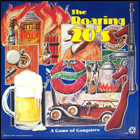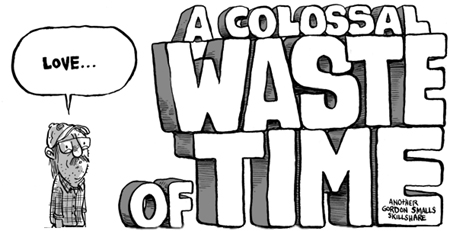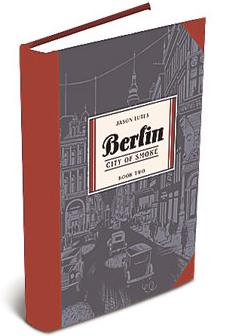
In the late 70s and early 80s, American boardgame design was going through a bit of a renaissance. Commercial wargames — attempts to recreate historical military operations on the tabletop — had been in existence since the early 1950s, and in the intervening years the field attracted more and more talent, expanding the boundaries of design and content. What had started as a hobby with a very limited scope — the Civil War, the Napoleonic Wars, the World Wars — began to bend and break and blossom with possibility. Simulated conflict was still the mainstay, but at the height of their productivity (circa 1980), great publishers like Avalon Hill, Simulation Publications, Inc., and Game Designers’ Workshop were turning out games about aliens invading from Andromeda, giant monsters destroying cities in Michigan, pirates a-plundering in the Caribbean, and innumerable other non-traditional subjects. Among my favorite games from this era was GDW’s Asteroid, a game in which one player played the part of an evil mad scientist, while the other player controlled a motley crew of heroes determined to foil his dastardly plans. Said plans consisted of piloting a rogue asteroid, in the depths of which the scientist had carved out his secret base, on to a collision course with Earth. The heroes had to land on the asteroid, invade the base, defeat the killer robots patrolling the subterranean corridors, and initiate a self-destruct mechanism that would save the day. Asteroid is a perfect example of how game designers of this era began to cherry pick ideas from B-movies and pulp novels.
In 1961, a man named Robert Yaquinto started a commercial printing business out of his garage in Dallas, Texas. Over the next 17 years he got heavily involved in wargaming, and by 1979 had seen the hobby grow enough to decide it was time to try his hand at the publishing end. He hired two experienced designers, J. Stephen Peek and the prolific S. Craig Taylor, to create a catalog of games from scratch.
Starting a game publishing venture from within a successful printing company put Yaquinto and his designers in the perfect position to innovate and ensure high production values. The result of this interrelationship was a roster of forty-six games, published between 1979 and 1984. Although many of these were formatted and sold like traditional wargames, the Yaquinto brand is most strongly identified with its Album Games, a series of twenty-two titles aimed at expanding the hobby’s audience through greater accessibility, more diverse subject matter, and appealing package design.
An Album Game was 12″ x 12″, about the same size as an LP (“long-playing” album, for the kids). When opened, the inner surface served as the board(s) and the counters (cardboard playing pieces) were stored in what would have been the record sleeve.
 M
M
The cover and interior mapboard for Swashbuckler (1980), which simulated shipboard battles and tavern brawls, complete with throwing flagons of ale, swinging from chandeliers, and yanking the rug out from under the opposition.
The breadth of subject matter covered by the Album Games was remarkable, and a good illustration of the flood of new ideas that was changing the face of the boardgaming subculture at the time. Here’s a sample of titles from Yaquinto’s catalog:
 M
M M
M
 M
M M
M
 M
M M
M
The Roaring 20s pits mobsters against the police commissioner and each other, as they manage speakeasies, rob banks, and put out hits on one another; Adventurer is a science fiction version of Swashbuckler, with small-scale scuffles taking place aboard starships or in planetside cantinas; Apache has the white man bringing civilization to the American West via the railroad, while the indigenous tribes raid and pillage in return. More details of any of these games can be found by clicking on the above thumbnails.
The BoardGameGeek rating system puts most of the Album Games at around 5 on a 10-point scale. I haven’t played one since 1986, but that feels about right, even for the time. The thing that made these games exciting to play wasn’t their rules — it was their themes, and the production values that reinforced those themes. Avalon Hill, SPI, and West End Games were all putting out products at least as diverse, and more playable, but Yaquinto knew how to put together an appealing package.
What the explosion in game themes demonstrated to me then was that boardgames could be about anything. They didn’t have to be dry re-enactments of historical battles simulated in detail, or boring exercises in die rolling like Monopoly. With some imagination and clever abstraction, a game designer could allow players to enter the worlds of Sinbad the Sailor, Sherlock Holmes, or Richard Nixon and John F. Kennedy. The equivalent experience in comics for me was discovering Read Yourself Raw while I was in art school.
I still believe that boardgames can be about anything, in the same way that a comic book can be about anything; it’s just another medium through which to process some part of the world, or one’s imagination. I have notebooks full of ideas, from an adaptation of Pride & Prejudice to a globe-trotting pulp adventure, and one day I hope to see some of them through to fruition. In the mean time, I keep an eye out for games that push the boundaries of theme in new and interesting ways.





















